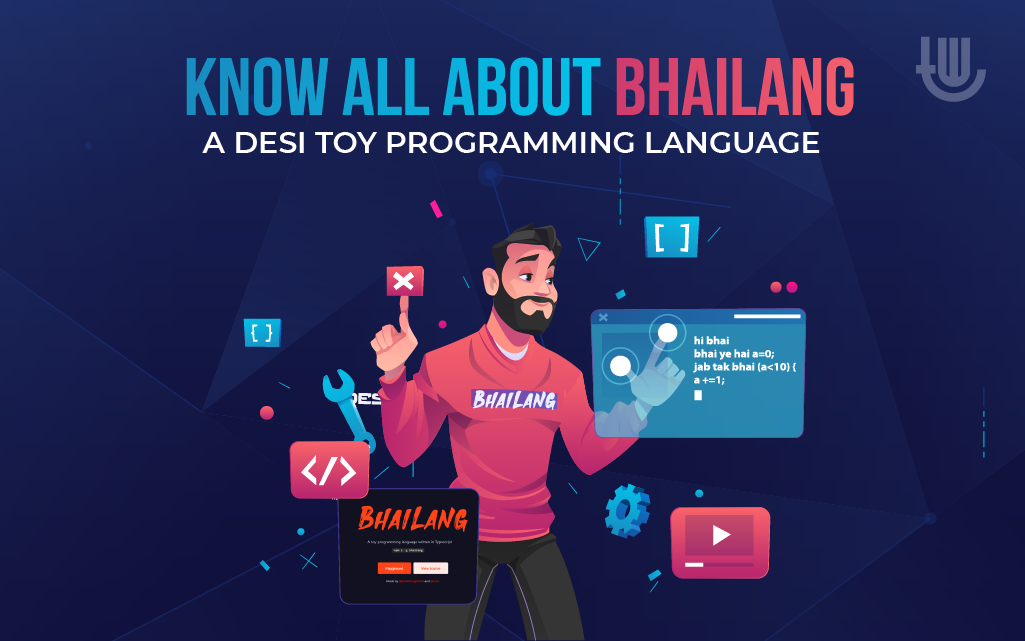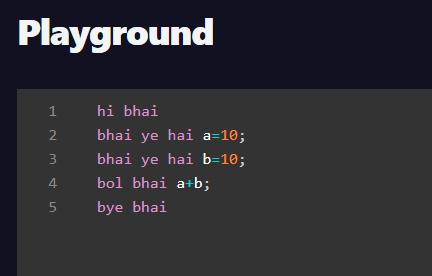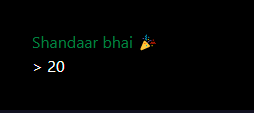Imagine having a programming language that gets you a comfortable vibe as you learn it? So all the desi dudes out there would be happy to know that there exists a programming language that can give you the ‘bro’ feeling as you code. This article talks about a toy coding language called ‘BhaiLang’ written in TypeScript. It’s created by Aniket Singh and Rishabh Tripathi on an inside joke- and that’s managed to garner a lot of attention lately. Read on to know more.

Know all about Bhailang- A desi toy programming language
BhaiLang is a programming language that adds a desi and conversational feel to your coding tasks. It’s about writing a code that starts with ‘Hi Bhai’ and ends with ‘Bye Bhai.’ Additional functions such as loops and conditions are made with Hindi words by appending ‘Bhai’ to it.
What exactly is BhaiLang?
To get BhaiLang installed on your device, you can use the following command:
‘npm i -g bhailang’ installs all required modules and dependencies.
You can code on a text file or the playground environment offered by their website.
Further, to execute the code and view the output, the compilation can be done with the ‘bhailang test.bhai’.
Scope of BhaiLang
The scope of BhaiLang at the moment is only limited to learning and trying out certain functions such as conditions and loops.
All we know about BhaiLang at the moment is that the coders can:
- Declare variables by using ‘bhai ye hai’.
- Mention variable types: true is sahi, false is galat, and null variable is nalla.
- The print function can be executed by ‘bol bhai’.
- If, else, and else can be mentioned by typing ‘agar bhai,’ ‘nahi to bhai,’ and ‘warna bhai’ respectively.
- In looping functions, one can use the loop, continue, and break by using ‘jab tak bhai,’ ‘agla dekh bhai,’ and ‘bas kar bhai,’ respectively.
Besides certain words, there is no major difference in the syntax-based difference in Bhai-Lang and other programming languages. It reminds us more of the C++ language with those semicolons, brackets, and indentations.
How to code in BhaiLang
Follow these steps to start coding in BhaiLang.
Head over to the playground area of BhaiLang for the starters. Read over a little to understand how functions work.
We start with the simple addition where we have a code piece like the given below,

Once the code is correct, click on the Run button towards the right of this Playground section. If there are no errors, the output will be displayed as follows:

Else, any error will be flagged and displayed below the playground section as follows:

Advantages and Disadvantages of knowing BhaiLang
One of the advantages of having your hands on this language is the fun with which you can have the essence of programming. For someone starting new and scared with the codes at first glance, BhaiLang will make them feel at home.
Another plus is the people who know Hindi might find it easy to grasp the conditions, looping, and functions easily.
However, the major disappointment lies in telling that BhaiLang is still a toy programming language. It can’t be used for complex developments and functionalities as we have in softwares. With these capabilities missing, we can enjoy typing in Bhai-Lang but not significantly use it. The coders will have to move to another suitable programming language once they are used to the basics of writing a code.
Bhai-Lang might give the ‘kick’ to the desi programmers, but an appropriate strategy needs to consider its use and scalability since the masses already like it.
Summarizing about Bhailang
To summarize the BhaiLang programming language, we feel that those who have this fear of coding and haven’t started it yet must give it a try. As a toy, this one will keep you entertained until you gain skills over the basics.
It is generally advisable for people to move to languages that offer advanced functionalities, such as Python or C++. People who take this part won’t find it difficult to code logic or deal with syntax-based errors.
Overall, head to BhaiLang, our desi toy programming language, for the entertainment as you learn.

Author Bio: This article has been written by Rishika Desai, B.Tech Computer Engineering graduate with 9.57 CGPA from Vishwakarma Institute of Information Technology (VIIT), Pune. Currently works as Threat Intelligence Researcher in CloudSEK. She is a good dancer, poet and a writer. Animal love engulfs her heart and content writing comprises her present. You can follow Rishika on Twitter at @ich_rish99.